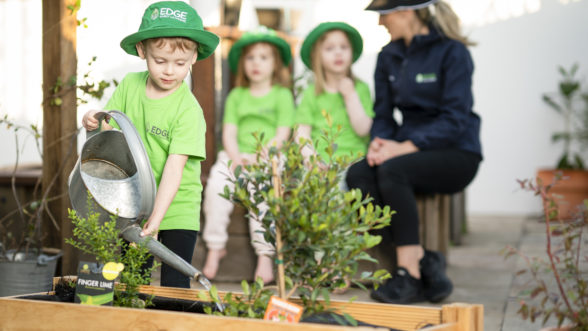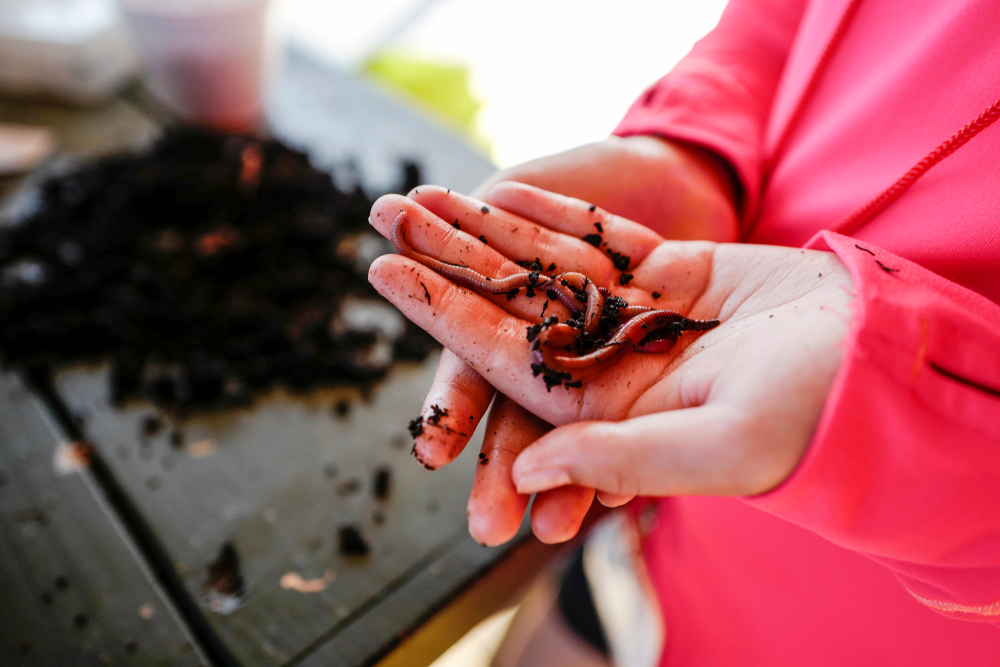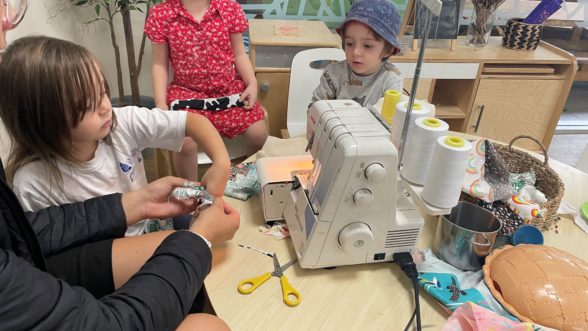
Sustainability
Worm Farms For Kids
08 June, 2022

If you’ve considered making a worm farm for kids but never quite known where to start, listen up. We’re talking you through the what, why and how of worm farms, and sharing why so many of our Edge Early Learning centres have one.
What is a worm farm?
Similar to a compost bin, worm farms help break down food waste and turn it into nourishing fertiliser for your garden. They typically look like a bin or bucket and may be stored outside or in the kitchen.
Unlike traditional compost, worms help to mix layers of soil together. They do this by burrowing under the ground and making tunnels, breaking down dead plants and flowers in the process. They also love eating dead leaves, plants, flowers and old fruit and vegetables – the waste they create (called ‘castings’) mixes with the soil to create a garden fertiliser that your plants will love.
The official term for worm farming is ‘vermiculture’, and worm farms may also be called wormeries or vermicomposting. These terms can be helpful to keep in mind when learning more about worm farms.
What are the benefits of a DIY worm farm for kids?
How long do you have?! Worm farms promise so many benefits. For one, they’re a great way to get rid of organic food waste in a sustainable way, rather than sending it to landfill where it releases methane gas as it breaks down. Worms can eat three to four kilograms of organic kitchen waste every week, which is a lot of waste saved from landfill!
The worm castings and worm tea (a liquid made from worm wee) are also budget-friendly, sustainable plant fertilisers. They will nourish your vegetable, flower and herb gardens, helping you and your children grow your own produce – which, in turn, reduces the plastic waste and transport emissions that are created when you buy produce at supermarkets. Worms really help us establish small yet sustainable habits!
Worm farms and similar sustainable activities also teach children the benefits of self-sufficiency and the circle of life, as well as how to collaborate with others. They also give children a better understanding of the environment and the value of gardening. Click here to find out more about raising eco-conscious children.
How to make a DIY worm farm for kids
You can buy a kids DIY worm farm kit from your local garden centre, but making your own is much more fun!
To make DIY worm farm from kids you will need the following:
- Two containers (a larger one with a lid to catch the waste, and a smaller one to house the worms and soil)
- Enough shredded paper and compost to create a 10cm layer in your smaller container
- Water
- A knife or other instrument to poke holes in one of the containers
- Last but not least, worms!
Once you have got all of your materials, here are the steps to bring your DIY worm farm to life:
- Find a warm, shady spot to set up your worm farm – a corner of the backyard or a place on you balcony can work well here!
- Put the larger container on the ground
- Poke several holes in the smaller container
- In the smaller container, create a 10-centimetre-deep layer of shredded paper and compost
- Gently add water so the layer is moist, then gently add the compost worms
- Add food scraps for the worms to feed on
- Close the lid and wait about a week while your worms settle into their new home
How to use a worm farm?
A worm farm is used to sustainably dispose of food scraps which can turn into fertiliser for your garden. If you’re looking to implement a worm farm at home, you can keep a new bin next to your recycling and general waste bins. When getting rid of any scraps you can dispose of them in this dedicated bin and when full, bring this out to the worm farm.
When you’re ready to fertilise your garden using the worm farm, simply use the liquid collected in your large container. This worm juice is an accelerant for helping plants to grow and thrive. Mix with your garden soil, spray on leaves or dilute in water to feed indoor plants.
What can you feed worms in a worm farm?
Remember: not all food scraps are good for worms. Try to only feed them fruits, vegetables, coffee grounds and tea bags, egg shells and shredded paper. Avoid citrus fruits, onions, capsicums, leeks and garlic, meat, dairy products, pasta, cereals and shiny, coated paper.
Where can you buy worms for your DIY worm farm?
There are many dedicated online stores that sell worms you can easily buy online and get delivered to your door. On top of this, your local pet store may also sell worms to add to your worm farm. However, this will depend on the individual store you visit.
Sustainable Worm Farms at Edge
We love worm farms here at Edge Early Learning. The below video shows a worm farm being set up at our Jane Street learning centre and talks you through some of the many reasons we think they are an import part of your child’s learning journey.

